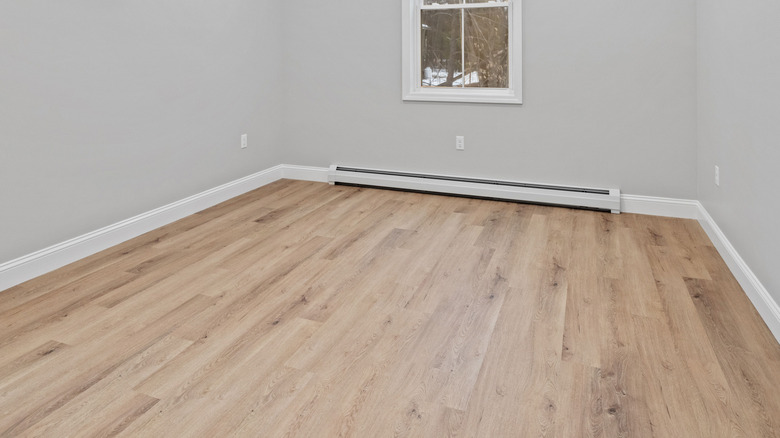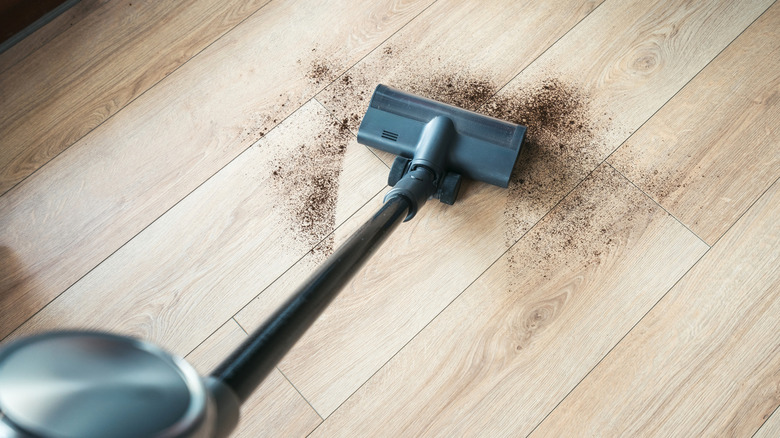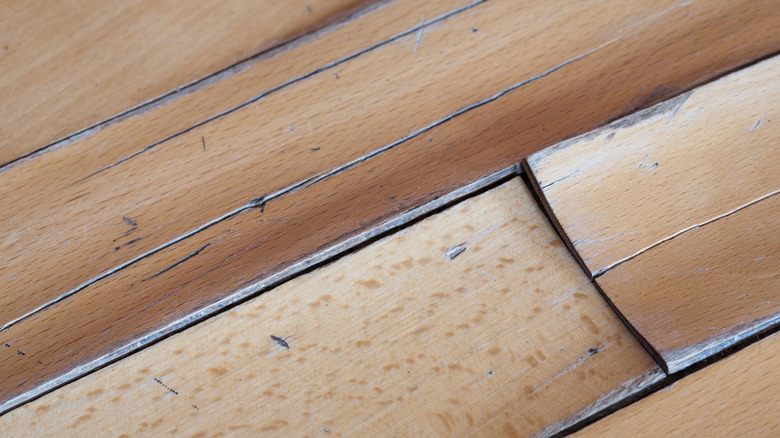How To Clean Your Unsealed Hardwood Floors Without Leaving Them Damaged
Hardwood floors are one of the best investments you can make in your home. According to data from the National Association of Realtors, over 50% of homebuyers are willing to pay more for a house that has them. From return on investment to their timeless appearance, there are many reasons hardwood floors will always be the right choice. Although many are sealed to protect them from scratches and scuff marks, some homeowners prefer to highlight the natural grain by leaving their hardwood floors unsealed. This, however, offers some unique challenges when it comes to keeping them clean. To find out more about how to clean unsealed hardwood floors without damaging them, we spoke with Peter Hansen, Co-Owner and Managing Member for Sparrow Estate Management, a maintenance partner for luxury homeowners.
In his exclusive interview with House Digest, Hansen said the first step to keeping unsealed hardwood floors looking their best is a proactive maintenance routine. "Keep shoes off indoors, trim your pets' nails, and vacuum weekly to remove grit that could scratch the surface," he suggested. Because unsealed floors are more prone to moisture damage, Hansen emphasized that maintaining a balanced humidity level inside your home is critical to avoid buckling, cupping, or swelling. From ditching the steam mop to quickly tackling any spills, make sure you know the best ways to prevent humidity from destroying your hardwood floors if you decide to leave them unsealed.
Dry cleaning methods work best
When it comes to cleaning unsealed wood floors, there's one important thing to remember: prolonged exposure to water causes problems. In his exclusive interview with House Digest, Peter Hansen recommended dry cleaning methods for regular upkeep. "Start by gently sweeping with a soft-bristle broom or using a vacuum with a wood floor attachment to remove dirt and debris," he said. Change your vacuum to its hard floor setting to turn off the brush roll. This will help to avoid unsightly scratches. Also ensure your vacuum's wheels are clean to avoid leaving scuff marks. It's a good idea to frequently clean your vacuum anyway.
Sometimes, unsealed floors will need a deeper cleaning. "Use a microfiber mop dampened with a very mild, wood-safe soap solution," Hansen recommended. He says to make sure the mop head is barely moist to avoid any water damage. "Clean in small sections ... and dry the floor immediately with a clean cloth to prevent moisture from seeping in," he added. Hansen urged homeowners to stay on top of spills as soon as they happen.
The maintenance expert also recommended using cleaning products that are specifically designed for unsealed floors. "Harsher products like vinegar or ammonia can stain or damage the surface," Hansen warned us.
Understand your floor's vulnerabilities and take preventative measures between cleanings
Along with avoiding wet mopping whenever possible, there are other critical steps you should take to care for your unsealed floors without damaging them. "Keep moisture levels to a bare minimum," Peter Hansen told House Digest during his exclusive interview. "Controlling humidity in your home is key because wood expands and contracts with moisture, which can create gaps that trap dirt and moisture over time." Hansen says it's important to understand your particular floor's vulnerabilities to determine the right level of relative humidity.
No matter what type of unsealed wood floors you have, Hansen says there are other steps you can take between cleaning to keep them looking their best. "Use protective measures like floor pads under furniture legs and rugs in high-traffic areas to prevent scratches and wear." He recommends rotating rugs to help them stay dry and avoid discoloration on the wood floors underneath.


